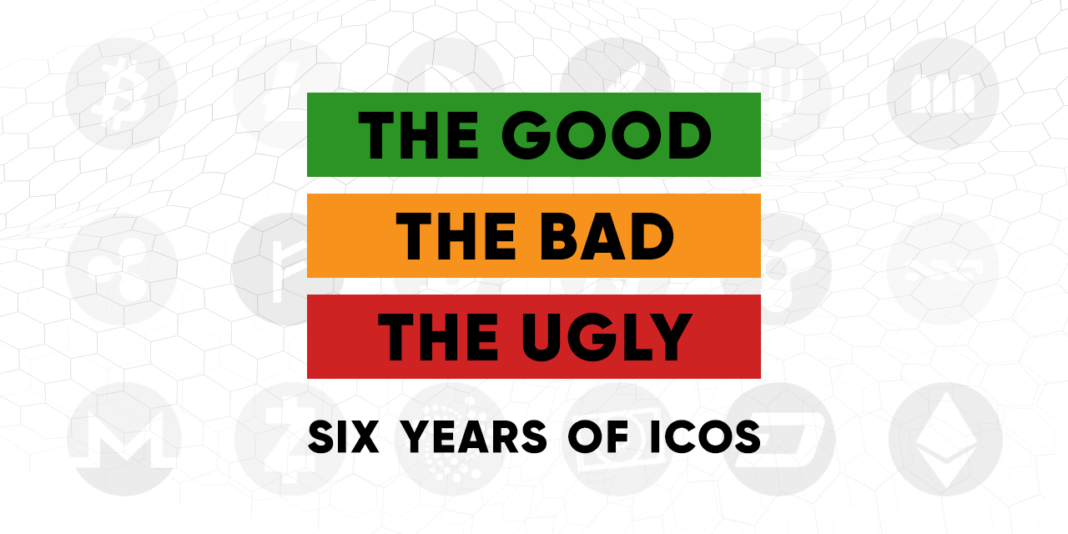In the past few years, initial coin offerings (ICOs) have dominated the crypto space with projects raising billions of dollars. Notably, the first ICO project was introduced in the crypto world 4 years after the birth of Bitcoin. Six years down the line, ICOs have had their share of good and bad times.
Interestingly, the amount raised by initial coin offerings ranged between $500K and $4 billion. Unfortunately, in-between the rise, scammers took hold of the space bringing the overall appetite down in under 12 months.
Table of Contents
ICO projects only required a whitepaper
According to Changpeng Zhao, the CEO of Binance, ICOs that took place in 2017 were guided by a whitepaper. But, the ICO season that followed was guided by a whitepaper plus a tangible product. 2017 was synonymous with initial coin offerings.
For example, data from ICODAATA reveals that:
“In 2017, there were 875 token fundraising events, raising more than $6.2 billion. In 2016, these two figures were only 29 and 90 million respectively.”
Surprisingly, during the 2017 ICO frenzy, some projects didn’t have a whitepaper but still attracted investors. The MasterCoin project (currently known as Omni) was the first project to issue an ICO in August 2013. Note that in the early days ICOs were referred to as ‘token financing’ and ‘token crowdfunding.’
During Omni’s token financing, Bitcoin was the only accepted cryptocurrency. Later, the second largest blockchain project, Ethereum, released its whitepaper in November 2013 and its ICO pre-sale period kicked off on June 2014 and closed in September.
From $500K to $18 million in 42 days
Unlike MasterCoin’s 500,000 US dollars, Ethereum raised 18 million US dollar in 42 days. Also, unlike MasterCoin’s ICO, Ethereum’s fundraising was governed by a legal framework drawn by the Ethereum Foundation, which is a non-profit organization based in Zug, Switzerland. Notably, being a no-profit, it is exempted from paying taxes. Towards the end of 2015, Ethereum established a standard for building on the platform known as the ERC20 standards. The standard unified token standards making it easier to issue coins and hold a token crowdfunding event. This ignited an era where everyone could send coins.
According to Ethereum’s co-founder, Charles Hoskinson:
“The ERC20 token currency crowdfunding model…revolutionized fundraising, decentralized banking, venture capital, and crowdfunding platforms like Kickstarter that provide true peer-to-peer funding.”
As noted by Jinse, a news outlet:
“For startups, especially cryptocurrency-based projects, the first thing in front of you is money. Technology development and project progress are inseparable from financial support, and it’s challenging to raise funds often by requiring investment institutions or angel investors to recognize and appreciate them. But after Ethereum, it all became easier. A whitepaper, a concept, or even a slogan can attract money from all over the world.”
Ethereum opens Pandora’s Box
Unfortunately, Ethereum opened Pandora’s box bringing scammers and hackers in drones. For example, in 2016, the DAO project raised over $150 million only for hackers to exploit a vulnerability on DAO’s code that led to a loss of more than $50 million. This was the beginning of an ugly ICO season.
In mid-2017, the Tezos project raised 232 million US Dollars in an ICO. Unfortunately, after the ICO, Tezos experienced management infighting further exposing the ugly side of initial coin offerings and the greed for money. In the same period, EOS launched its ICO period raising over 4 billion US dollars.
Some made billions while others became beggars
The 2017 ICO frenzy made some billionaires through their coin holding. Additionally, the same period saw the entry of illegal fundraising, pyramid schemes, fraud, and scams. Consequently, regulators came into the picture. For instance, in September 2017, China banned ICOs saying that they were illegal fundraising tools.
In 2018, discussions to attract funding revolved around blockchain technology. Surprisingly, in 2018, ICOs raised 7.8 billion US dollars exceeding what was raised in 2017. However, in 2018, the price of Bitcoin fell from the highs of $20,000 to lows of approximately $3,000.
Although ICOs were still the preferred funding method in early 2019, initial exchange offerings (IEOs) are slowly taking over. In the United States, the Securities and Exchange Commission has been vigilant on any ongoing ICO project requiring those involved first to seek approval. According to Changpeng Zhao, upcoming crypto-related projects will have “products and users,” and although cryptocurrencies are still high-risk investments, “the industry is now much healthier.”




















